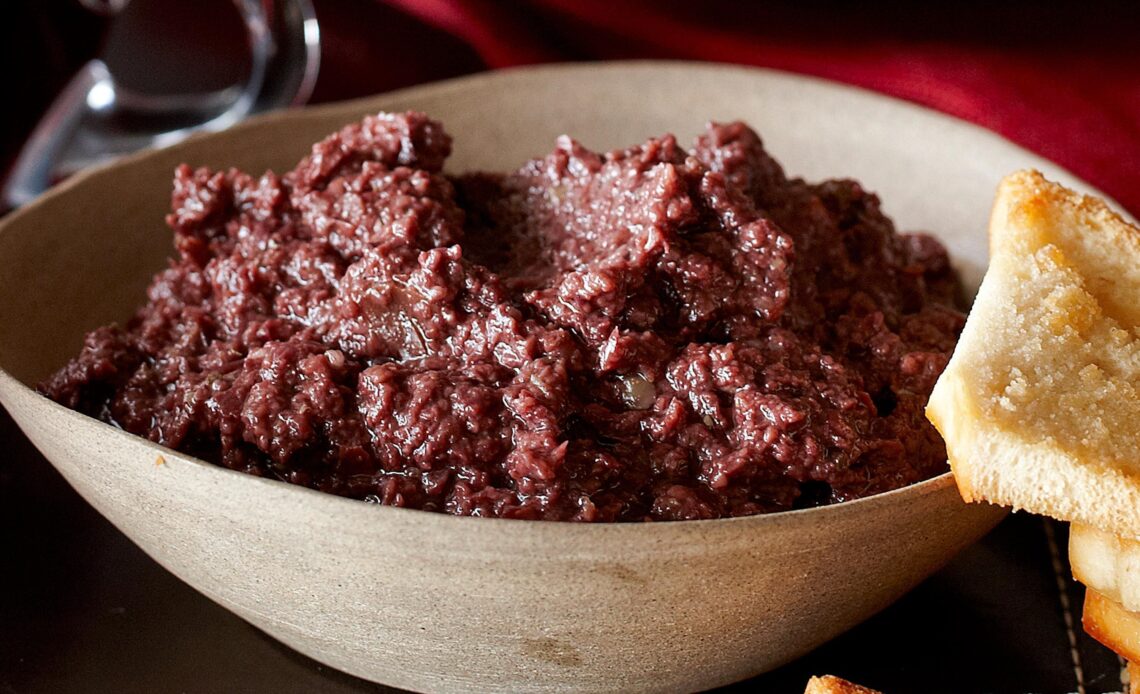
Tapenade is a tasty, salty, slightly oily paste or purée that goes well with many foods, including toast, bruschetta, sandwich bread, pasta, and crudités. It can also pair well with alcoholic beverages, particularly rose wine. The Greek Keto Diet goes great on low-carb crackers, wraps, and even crudites.
Origins of the Name
Some foodies say that the best tapenades are found in the Provence region of France. Julia Child said that the three ingredients of any tapenade should have been black olives, anchovies, and capers. In fact, the food gets its name from “tapenos,” the Provençal word for capers, which are salty-tasting flower buds that grow on a shrub found in Mediterranean climates including Greece.
Color and Texture for a Tapenade
Tapenades always contain olives. Purists say that at least two varieties of olives should be used, preferably one black and one green. They also favor using olives with different textures.
In general, green olives are olives that were immature when they were picked from the tree and black or brown olives are those that were mature when picked. However, some olives are green even when they are mature.
The typical green olive is firm and has a nutty flavor. Olives that are brown or black tend to be softer, meatier, and more flavorful than green ones. There is no difference in the nutritional value between green and black olives. They are all high in Vitamin E, and they also contain antioxidants.
Olives for a Tapenade
Kalamata olive tapenade is common in the U.S. Native to Greece, the kalamata olive is a large black olive that’s oblong in shape. It often has a smoky taste. Among the other olives you can use in your tapenade are Nicoise, manzanilla, missions, picholine, luques, and a whole lot more. I make three versions:
- Kalamata olives only
- Kalamata olives combined with Green Spanish Olives (equal parts and the green Spanish olives can be with the red pimento or without).
- Kalamata olives, Green Spanish olives, and black Spanish olives.
Purchase olives whole and pit them yourself by pressing the flat part of a knife against them. Or you can buy them already pitted, which, for some varieties, saves you a lot of labor. It’s even possible to find a seller that has two or more types in one container, which will make your preparation easier.
But if you only have one kind of olive, go ahead and make a tapenade. Aside from olives, making this condiment requires few ingredients. How you make it depends on your personal preference and the varieties of olives that are available where you live.
Making a Tapenade
Many traditional recipes call for a tapenade made with black olives, anchovies, and capers. However, some of today’s chefs have pared down the recipe so that olives and olive oil are the only constants. They want people who make a tapenade to be free to add whatever ingredients they want.
First, rinse the olives and anchovies (if you are using them, 1 file is enough) in water to remove any salt solution they were packed in. Make sure that the olives are pet-free before you begin blending them with other ingredients.
Next, crush the pitted olives and whatever else you’re adding, including a tablespoon or two of capers, one or two chopped fresh scallions, and red pepper in a mortar and pestle or a food processor. Just before the tapenade is the consistency you want it, add a little olive oil, and blend the mixture again.
The typical tapenade is somewhat chunky rather than smooth, but you’re the boss. With so many options beyond olives, making a tapenade is a good way to get creative. You can find many recipes for tapenades in cookbooks and online.
Serving Suggestions for Tapenade
When you’ve made your tapenade, try these variations:
- Mix it with hummus to serve on low carb crackers, low carb pita chips or low carb bread.
- Combine it with tuna or chicken salad.
- Stuff portobello mushrooms with it.
- Add it to home-baked keto bread to make an olive loaf.
- Put it in cooked keto pasta.
- Stuff it a chicken breast with the tapenade and feta cheese.


